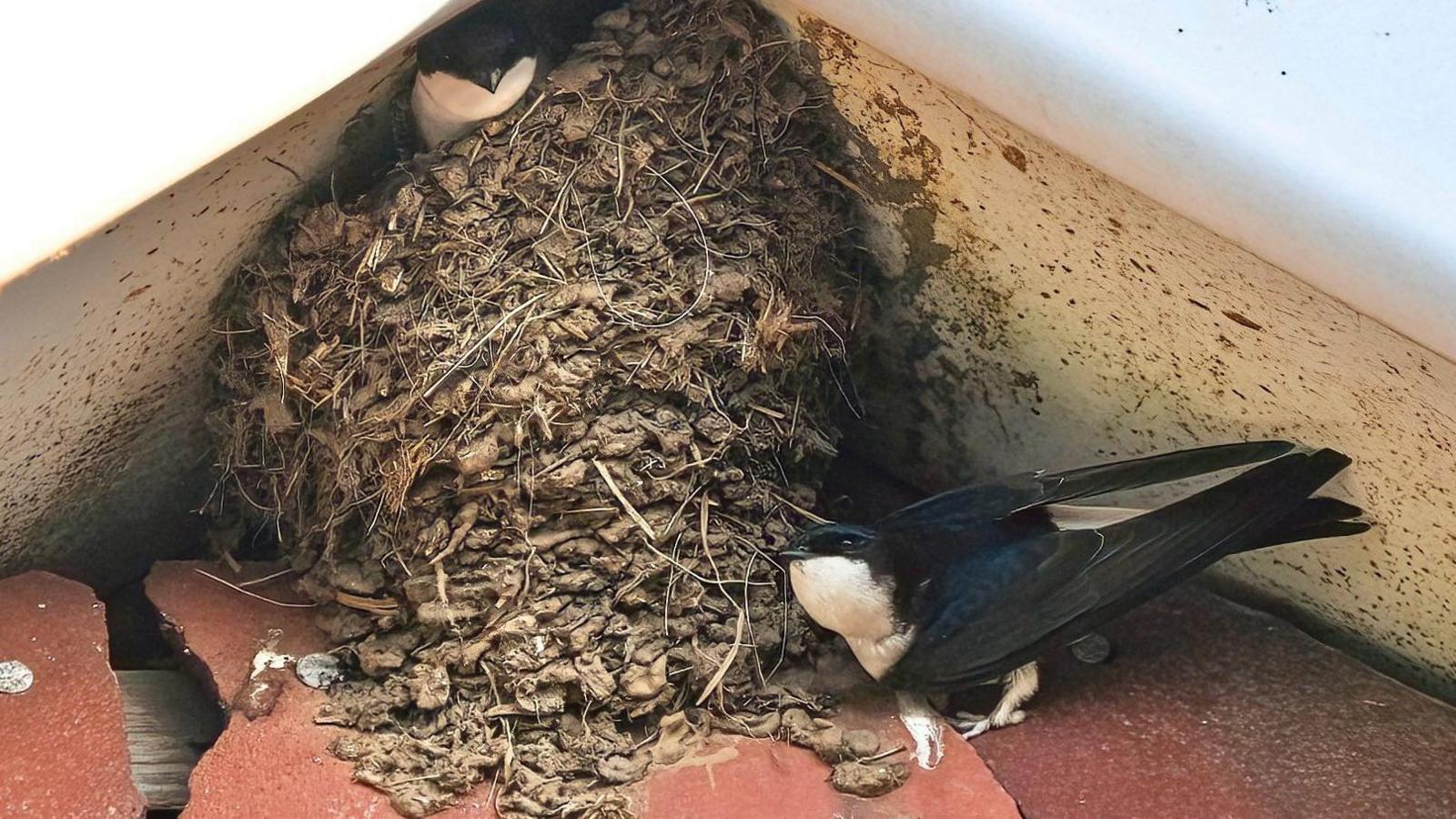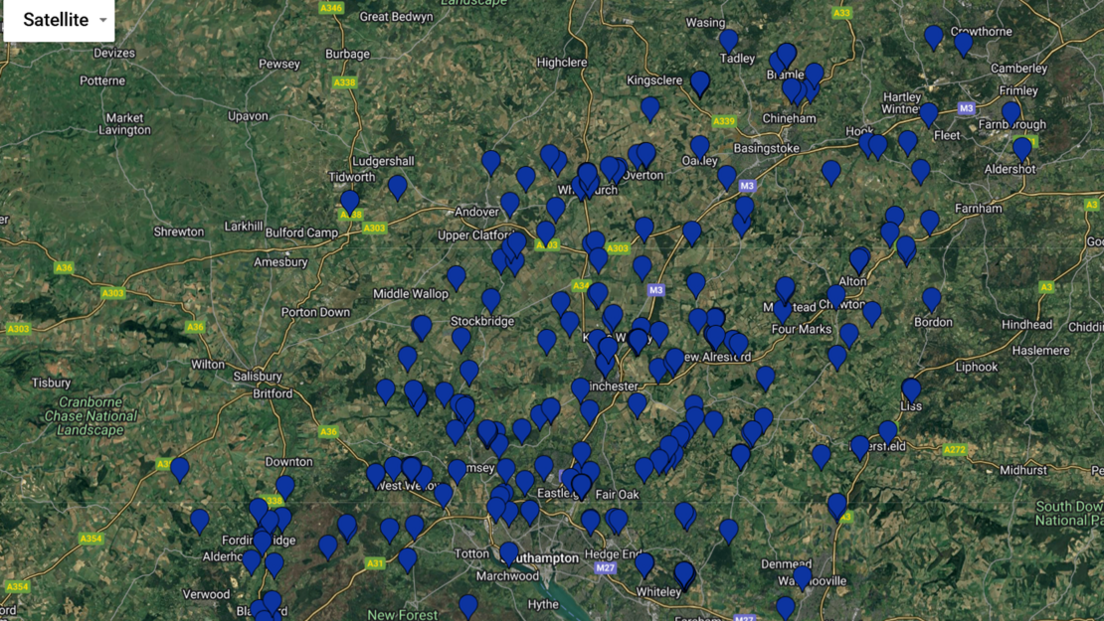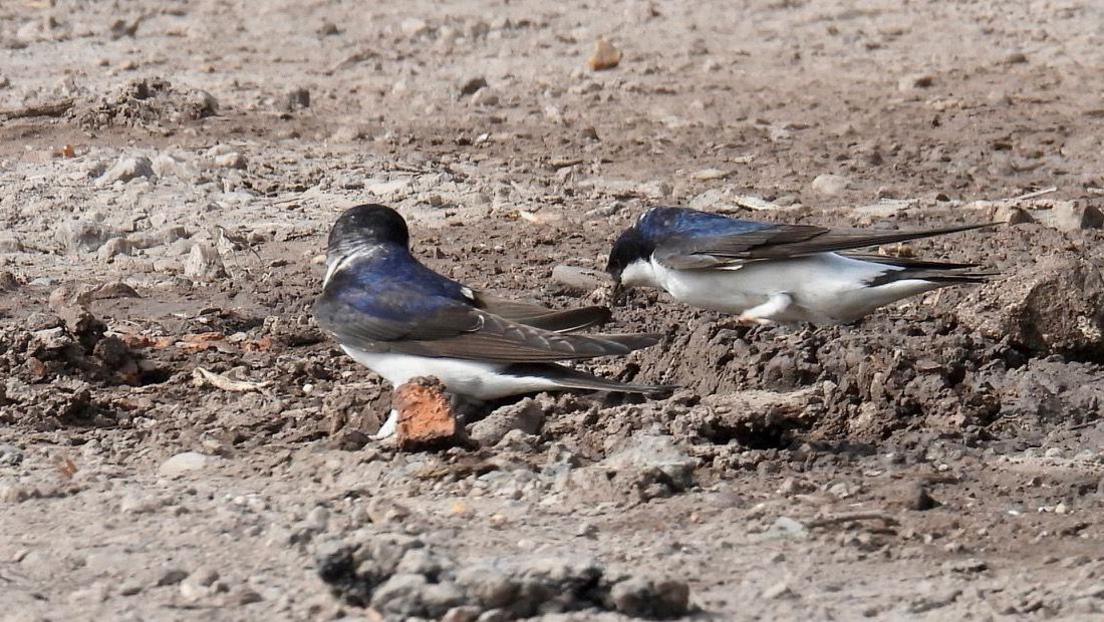House martin nests surveyed as numbers decline

House martins usually nest under the eaves of buildings
- Published
The organisers of an initiative aimed at reversing a decline in numbers of house martins are asking members of the public to report the locations of nests.
The distinctive dark blue and white birds, which migrate from Africa each spring, are on the UK's Red List of endangered bird species.
The Hampshire House Martins Project will use the data gathered to help with conservation efforts, including providing artificial nest cups.
The birds "need our help", said Keith Betton, chair of Hampshire Ornithological Society, which launched the project.
Each April and May, House Martins return from Africa to spend the summer in the UK.
They catch flying insects on the wing and build cup-shaped nests with mud under the eaves of houses and other buildings.
The birds often form colonies with several nests in close proximity.
The decline in numbers has been blamed on a fall in quantities of insects and a lack of suitable nesting sites.

More than 200 nesting sites have already been recorded across Hampshire
Hot summers have meant soft mud to build their nests is in short supply, while modern plastic soffits on roofs make it difficult for mud to stick, resulting in nests being lost.
The society is encouraging people to record locations of house martin nests, external on its website. More than 200 sites have been posted so far.
The data will be used to assess the extent of their decline and look into potential conservation methods.
It is hoped that artificial nest cups in existing colonies could save valuable nest-building time for the birds, make their nests more robust and boost breeding success.
Mr Betton said: "We want to find out where they are nesting and, if possible, get artificial nest boxes installed in some places to encourage more to breed.
"This is a lovely bird to have nesting close to us and they need our help."
Get in touch
Do you have a story BBC Hampshire & Isle of Wight should cover?
You can follow BBC Hampshire & Isle of Wight on Facebook, external, X (Twitter), external, or Instagram, external.
Related topics
- Published31 May
